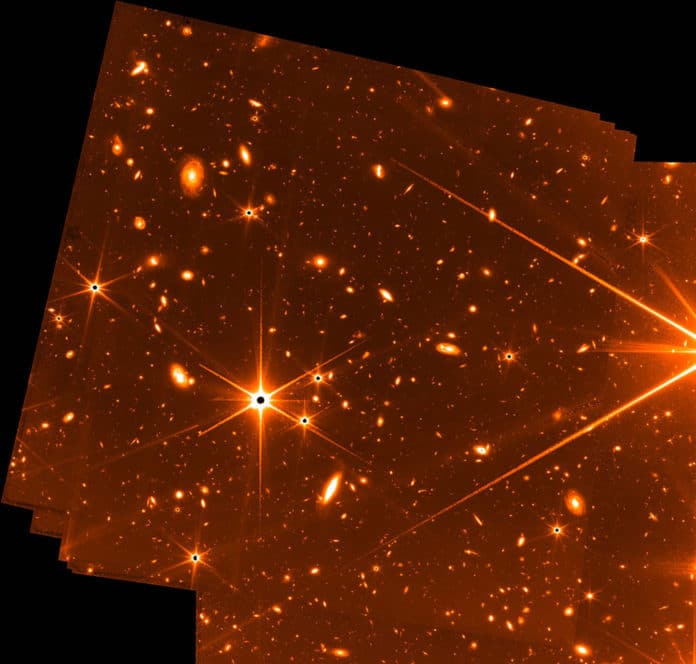Scientists begin the countdown to July 12 date with Webb images. Launched in December 2021, the James Webb Space Telescope, the observatory, is all set to ensure it is ready for science.
Webb’s Fine Guidance Sensor (FGS) recently captured a view of stars and galaxies that provides a tantalizing glimpse at what the telescope’s science instruments will reveal in the coming weeks, months, and years.
The resulting engineering test image is among the deepest images of the universe ever taken, representing highly faint objects, and is now the deepest image of the infrared sky. Bright stars stand out with their six long, sharply defined diffraction spikes. This was the effect of Webb’s six-sided mirror segments. Beyond the stars – galaxies fill nearly the entire background.
The monochromatic image is displayed in false color with white-yellow-orange-red representing the progression from brightest to dimmest. The bright star (at 9.3 magnitudes) on the right-hand edge is 2MASS 16235798+2826079. There are only a handful of stars in this image – distinguished by their diffraction spikes.
The rest of the objects are thousands of faint galaxies, some in the nearby universe but many more in the high redshift universe.
The test image was produced during a thermal stability test in mid-May. It has some rough-around-the-edges qualities to it. The data was initially taken to test how well the telescope could stay locked onto a target. This indicates the power of the telescope.
In this image, the FGS image was acquired in parallel with NIRCam imaging of the star HD147980 over eight days at the beginning of May. This image results from 32 hours of exposure time at various Guider 2 channel overlapping pointings.
Because FGS does not use color filters when its aperture is open, unlike other scientific instruments, it is impossible to thoroughly examine the age of the galaxies in this image. But FGS can still create breathtaking images of the cosmos when it captures unintended imagery during a test.
